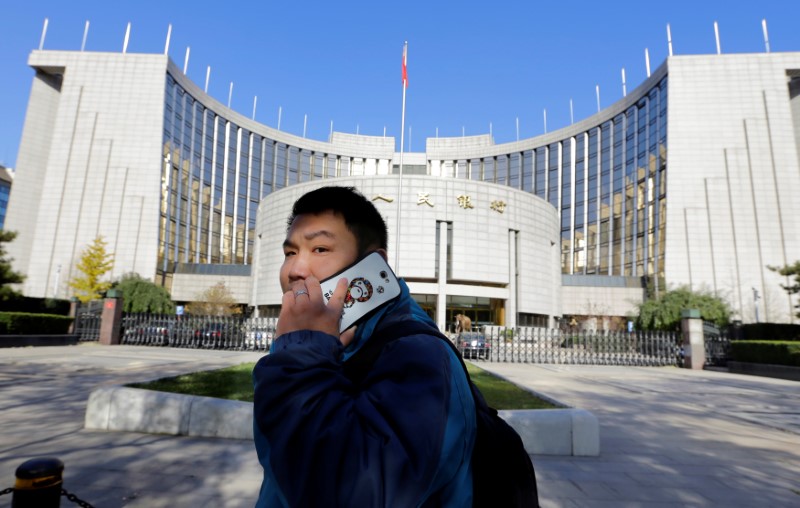 © Reuters. China banking regulator issues draft rules on liquidity risk management
© Reuters. China banking regulator issues draft rules on liquidity risk managementBEIJING (Reuters) – China’s banking regulator on Wednesday issued draft rules on commercial banks’ liability risk management with an aim to improve lenders’ risk assessment framework and safeguard the banking system in the new market environment.
The draft rules introduced three new quantitative measures on banks’ liquidity risks, of different scales, the China Banking Regulatory Commission (CBRC) said in an online statement.
Among the measures, the net stable funding ratio, which gauges lenders’ ability to use long-term stable funding to support business development, will apply to commercial banks with more than 200 billion yuan ($30.24 billion) in assets.
The high-quality liquid assets adequacy ratio, which measures whether banks have sufficient high-quality assets to cover short-term liquidity gaps under stress scenarios, will apply to commercial lender with less than 200 billion yuan in assets.
The liquidity matching ratio will apply to all commercial banks, the regulator said. The ratio will assess banks’ main asset-liability duration structures.
The rules come as Beijing seeks to fend off risks in the country’s massive financial sector and catch up with the latest developments in financial markets.
“As interest rate liberalization and financial innovation continue to deepen … the interconnectedness of financial institutions has increased, making it easier for liquidity risk to spread and transfer in the banking system,” the CBRC said in its statement.
The rules will “effectively push commercial banks to improve their ability to manage liquidity risk”, it added.
The rules will take effect on March 1, 2018, the CBRC said.
($1 = 6.6142 renminbi)
Fusion Media or anyone involved with Fusion Media will not accept any liability for loss or damage as a result of reliance on the information including data, quotes, charts and buy/sell signals contained within this website. Please be fully informed regarding the risks and costs associated with trading the financial markets, it is one of the riskiest investment forms possible.
Source: Investing.com



























